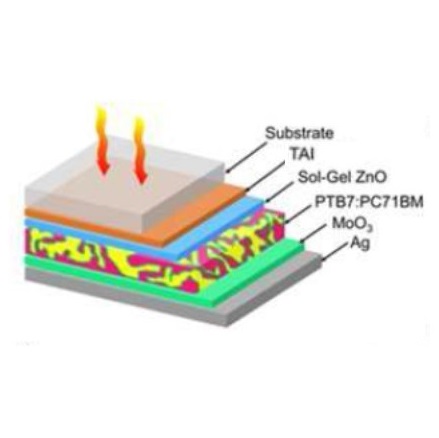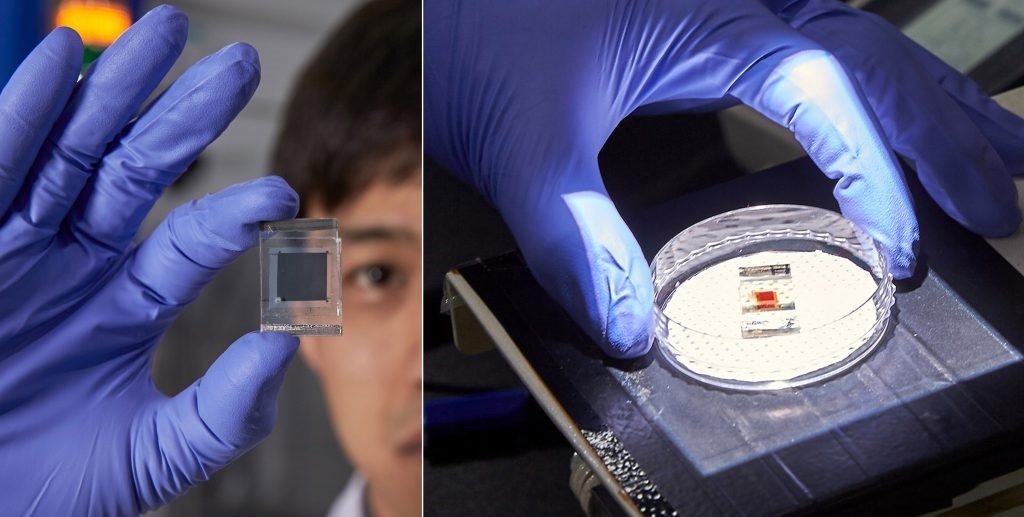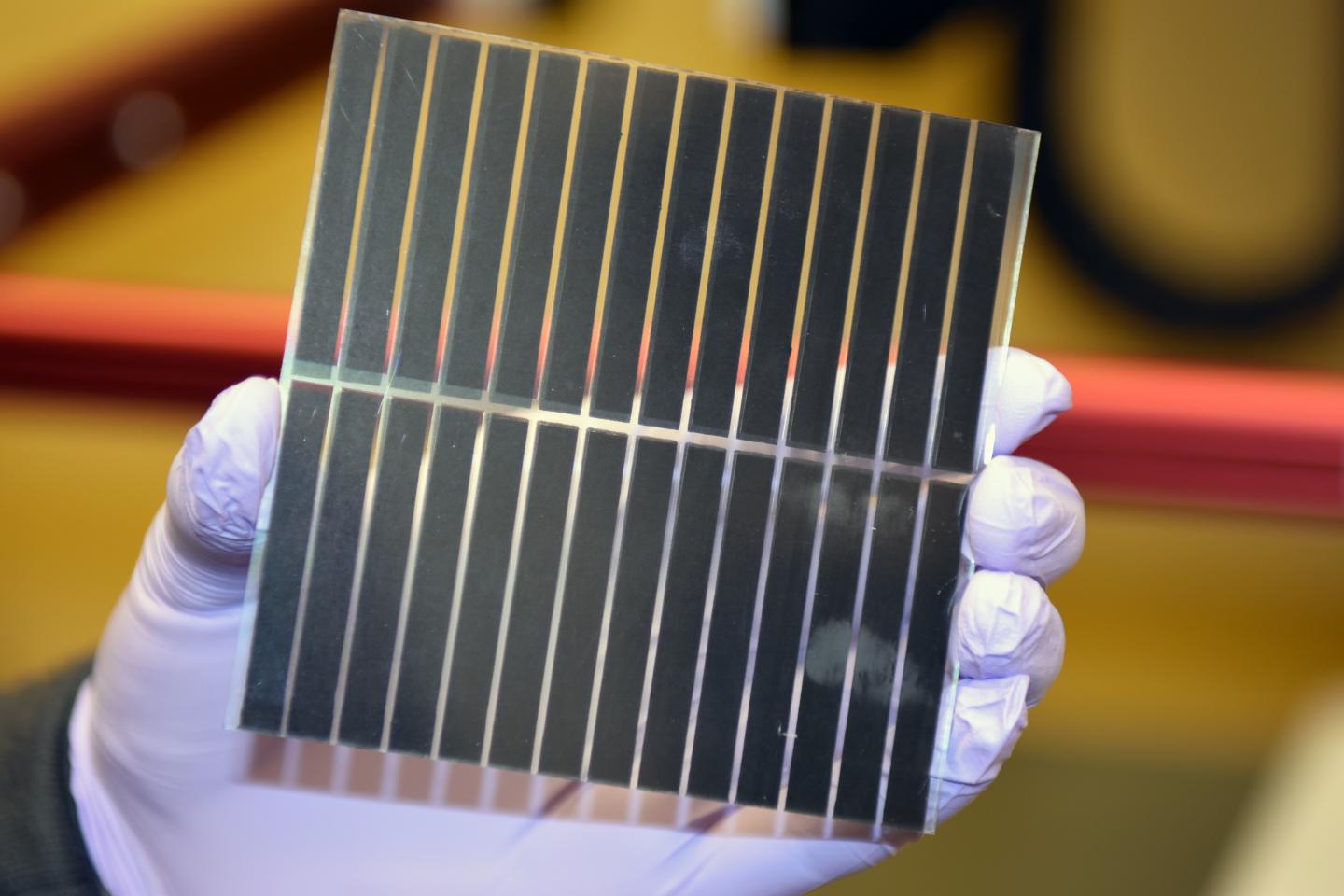2015/11/06
Thin films of silver are extensively used in a variety of applications that can range from plasmonics, optical metamaterials, to tailored-emissivity coatings. When present in their ultrathin form (thickness < 10 nm), they are also used as transparent electrodes, being a key ingredient to many optoelectronic and photonic devices especially due to their good flexibility.
In a recent work published in the journal Advanced Functional Materials, ICFO researchers Dhriti Sundar Ghosh, Quan Liu, Paola Mantilla-Perez, Tong Lai Chen, Vahagn Mkhitaryan, led by UPC Prof. at ICFO Jordi Martorell and ICREA Prof. at ICFO Valerio Pruneri, in collaboration with Minghuang Huang and Sean Garner from Corning Incorporated, have proposed and developed multilayer transparent electrodes containing silver (in the paper named TAI electrodes) with very low sheet resistance, high optical transmittance great mechanical flexibility by having the material increase in its resistance only 6.6% after 103 tensile bending cycles.
These performances, particularly in terms of electrical conductance and mechanical flexibility, have shown to outshine state-of-the-art single layer indium tin oxide (ITO) materials. In their work, the team of researchers from ICFO and Corning were able to obtain these results by fabricating this transparent electrode with the following layout: they sandwiched an ultrathin nano-metric silver layer in between two antireflection oxide layers. The new multilayer transparent electrode was also applied to ultrathin and flexible Corning glass, named Willow.
The team has also built polymer solar cells on the transparent conductive substrates, not only have demonstrated to achieve a conversion efficiency of 8.34%, higher than similar structures built on conventional ITO substrates, but they have also shown to display no significant changes in solar cell parameters, revealing their mechanical robustness as potential elements for flexible and efficient organic optoelectronic devices.
Link to the paper
Link to the research group led by ICREA Prof. at ICFO Valerio Pruneri
Link to the research group led by UPC Prof. at ICFO Jordi Martorell

Highly Flexible Transparent Optoelectronics
ICFO and Corning demonstrate highly flexible transparent conductive substrates in efficient polymer solar cells

The conductive transparent substrates with the polymer solar cell on top











